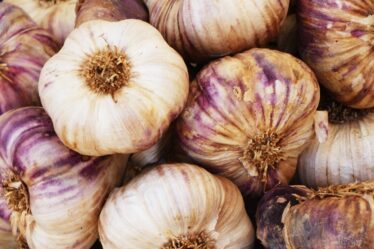
Spices and seeds have been an integral part of cooking for centuries. They not only enhance the flavor of dishes but also provide numerous health benefits. From adding a kick of heat to a dish with chili peppers to adding depth and warmth with cinnamon, spices and seeds have the power to transform a simple meal into a culinary masterpiece. In this article, we will explore the role of spices and seeds in cooking, their health benefits, how to incorporate them into your daily diet, the science of flavor, the art of pairing them with different foods, a comprehensive guide to different types of spices and seeds, tips for storing them properly, how to make your own spice blends and seed mixes, the best spices and seeds for different cuisines, and the future of spices and seeds in the culinary world.
Key Takeaways
- Spices and seeds play a crucial role in enhancing the flavor of food.
- Incorporating spices and seeds into your daily diet can provide numerous health benefits.
- Understanding the science of flavor can help you pair spices and seeds with different foods.
- Proper storage of spices and seeds is important to maintain their freshness and potency.
- Experimenting with different spice blends and seed mixes can add a unique touch to your cooking.
The Role of Spices and Seeds in Cooking
Spices and seeds play a crucial role in enhancing the flavor of dishes. They add depth, complexity, and aroma to food, making it more enjoyable and satisfying. Whether it’s the earthy warmth of cumin in a curry or the fragrant sweetness of vanilla in a dessert, spices and seeds have the power to elevate any dish.
Historically, spices and seeds have been highly valued commodities. They were once rare and expensive, often traded over long distances. The spice trade played a significant role in shaping world history, leading to exploration and colonization. Spices were not only used for culinary purposes but also for medicinal and preservation purposes.
Exploring the Health Benefits of Spices and Seeds
In addition to their flavor-enhancing properties, spices and seeds also offer numerous health benefits. Many spices and seeds are rich in antioxidants, which help protect against oxidative stress and inflammation in the body. For example, turmeric contains curcumin, a powerful antioxidant with anti-inflammatory properties.
Spices and seeds are also packed with essential nutrients. For instance, flaxseeds are an excellent source of omega-3 fatty acids, fiber, and lignans, which have been shown to have protective effects against certain types of cancer. Cinnamon is known for its blood sugar-regulating properties, making it beneficial for individuals with diabetes.
How to Incorporate Spices and Seeds into Your Daily Diet
| Spices and Seeds | Benefits | Recommended Daily Intake |
|---|---|---|
| Cinnamon | Regulates blood sugar, anti-inflammatory, antioxidant | 1/2 to 1 teaspoon |
| Turmeric | Anti-inflammatory, antioxidant, improves brain function | 1/2 to 1 teaspoon |
| Ginger | Anti-inflammatory, aids digestion, relieves nausea | 1/2 to 1 teaspoon |
| Cumin | Improves digestion, anti-inflammatory, antioxidant | 1/2 to 1 teaspoon |
| Chia Seeds | High in fiber, omega-3 fatty acids, protein | 1 to 2 tablespoons |
| Flax Seeds | High in fiber, omega-3 fatty acids, lignans | 1 to 2 tablespoons |
| Pumpkin Seeds | High in magnesium, zinc, protein | 1/4 to 1/2 cup |
| Sesame Seeds | High in calcium, iron, magnesium | 1 to 2 tablespoons |
Incorporating spices and seeds into your daily diet is easier than you might think. You can start by adding them to your meals and snacks. For example, sprinkle cinnamon on your morning oatmeal or add a pinch of cayenne pepper to your scrambled eggs. You can also experiment with different spice blends and seed mixes to create unique flavors.
When it comes to cooking with spices and seeds, the possibilities are endless. You can use them in marinades, rubs, dressings, sauces, and even desserts. For example, you can make a homemade curry powder by combining ground cumin, coriander, turmeric, ginger, and cinnamon. This blend can be used to season meat, vegetables, or lentils.
The Science of Flavor: How Spices and Seeds Affect Taste
The flavor of spices and seeds is not just about taste; it’s also about aroma and texture. When we eat food, our taste buds detect five basic tastes: sweet, sour, salty, bitter, and umami. Spices and seeds interact with our taste buds to create a complex sensory experience.
The aroma of spices and seeds is equally important in enhancing flavor. When we smell food, the olfactory receptors in our nose send signals to our brain, which then interprets the scent. This is why the smell of freshly ground coffee or the aroma of baking bread can make our mouths water.
The texture of spices and seeds also plays a role in the overall eating experience. For example, biting into a whole mustard seed releases a burst of pungent flavor, while grinding it into a powder creates a milder, more evenly distributed taste.
The Art of Pairing Spices and Seeds with Different Foods

Pairing spices and seeds with different types of cuisine requires some knowledge and experimentation. It’s important to consider the flavor profiles of both the spice or seed and the food you are pairing it with. For example, if you are cooking a Mexican dish, you might want to use spices like cumin, chili powder, and oregano to enhance the flavors of the dish.
When using multiple spices and seeds in a dish, it’s important to balance the flavors. Some spices and seeds are more dominant than others, so it’s important to use them in moderation. For example, if you are using cinnamon and nutmeg in a dessert, you might want to use a smaller amount of nutmeg since it has a stronger flavor.
The Different Types of Spices and Seeds: A Comprehensive Guide
There are countless spices and seeds used in cooking, each with its own unique flavor profile and uses. Here is a comprehensive guide to some of the most common spices and seeds:
1. Cumin: Cumin has a warm, earthy flavor with a hint of citrus. It is commonly used in Indian, Middle Eastern, and Mexican cuisines. It pairs well with meats, vegetables, and legumes.
2. Coriander: Coriander has a fresh, citrusy flavor with hints of sweetness and spice. It is commonly used in Indian, Middle Eastern, and Asian cuisines. It pairs well with meats, vegetables, and grains.
3. Turmeric: Turmeric has a warm, bitter flavor with a hint of ginger. It is commonly used in Indian and Southeast Asian cuisines. It pairs well with meats, vegetables, and rice.
4. Paprika: Paprika has a sweet, smoky flavor with a hint of heat. It is commonly used in Hungarian, Spanish, and Indian cuisines. It pairs well with meats, vegetables, and rice.
5. Cinnamon: Cinnamon has a sweet, warm flavor with a hint of spice. It is commonly used in desserts and baked goods. It pairs well with fruits, chocolate, and nuts.
6. Nutmeg: Nutmeg has a warm, sweet flavor with a hint of spice. It is commonly used in desserts and baked goods. It pairs well with fruits, chocolate, and dairy.
7. Sesame Seeds: Sesame seeds have a nutty flavor with a hint of sweetness. They are commonly used in Asian and Middle Eastern cuisines. They pair well with meats, vegetables, and grains.
8. Flaxseeds: Flaxseeds have a nutty flavor with a hint of earthiness. They are commonly used in baked goods and smoothies. They pair well with fruits, nuts, and grains.
The Do’s and Don’ts of Storing Spices and Seeds
Properly storing spices and seeds is essential to maintain their freshness and flavor. Here are some do’s and don’ts:
Do’s:
– Store spices and seeds in airtight containers to prevent moisture and air from degrading their quality.
– Keep spices and seeds away from heat, light, and humidity.
– Label containers with the date of purchase to ensure freshness.
– Store spices and seeds in a cool, dark place like a pantry or cupboard.
Don’ts:
– Don’t store spices and seeds near the stove or other sources of heat.
– Don’t store spices and seeds in clear glass containers as they can be exposed to light.
– Don’t keep spices and seeds for too long; they lose their potency over time.
How to Make Your Own Spice Blends and Seed Mixes
Making your own spice blends and seed mixes is a great way to customize flavors and experiment with different combinations. Here’s a step-by-step guide:
1. Choose your spices and seeds: Select the spices and seeds you want to include in your blend or mix. Consider the flavor profiles and how they will complement each other.
2. Toast the spices and seeds: Toasting spices and seeds can enhance their flavors. Heat a dry skillet over medium heat and add the spices and seeds. Toast them for a few minutes until fragrant, stirring occasionally.
3. Grind the spices and seeds: Once toasted, let the spices and seeds cool before grinding them. You can use a mortar and pestle, spice grinder, or coffee grinder to grind them into a powder or leave them whole for a seed mix.
4. Mix the spices and seeds: Combine the ground spices and seeds in a bowl and mix well. Adjust the quantities to your taste preferences.
5. Store the spice blend or seed mix: Transfer the spice blend or seed mix to an airtight container and label it with the date of preparation.
The Best Spices and Seeds for Different Cuisines
Different cuisines have their own signature spices and seeds that are commonly used in their dishes. Here are some examples:
– Indian cuisine: Cumin, coriander, turmeric, cardamom, cinnamon, cloves
– Mexican cuisine: Cumin, chili powder, oregano, paprika
– Middle Eastern cuisine: Cumin, coriander, turmeric, cinnamon, sumac
– Italian cuisine: Basil, oregano, thyme, rosemary
– Chinese cuisine: Star anise, Sichuan peppercorns, ginger, garlic
– Thai cuisine: Lemongrass, galangal, kaffir lime leaves, Thai basil
The Future of Spices and Seeds in the Culinary World
As the culinary world continues to evolve, so does the use of spices and seeds. Chefs and home cooks are constantly experimenting with new flavors and combinations. Emerging trends include the use of unique spices and seeds from different cultures, such as za’atar from the Middle East or shichimi togarashi from Japan.
New technologies and techniques are also changing the way we use spices and seeds. For example, molecular gastronomy has allowed chefs to create innovative dishes using techniques like spherification and foams. This opens up new possibilities for incorporating spices and seeds in unexpected ways.
Spices and seeds are not just ingredients; they are essential tools in the culinary world. They enhance the flavor of dishes, provide numerous health benefits, and offer endless possibilities for creativity in the kitchen. Whether you’re a seasoned chef or a novice cook, incorporating spices and seeds into your daily diet can elevate your meals to new heights. So go ahead, explore the world of spices and seeds, and unlock the full potential of your cooking.
If you’re a fan of seeds and spices, you’ll definitely want to check out this article on Flavorful Sips. They have a wide range of delicious recipes and guides, including a simple banana bread recipe that incorporates the perfect blend of seeds and spices. But that’s not all! They also take you on a journey to discover Almdudler, a unique taste of Austria that combines herbs and spices for a refreshing beverage. And if you’re craving something citrusy, don’t miss their article on decoding the delights of orange drinks. With so many tantalizing options, you’ll be inspired to experiment with seeds and spices in your own culinary creations. Check out the article here!



